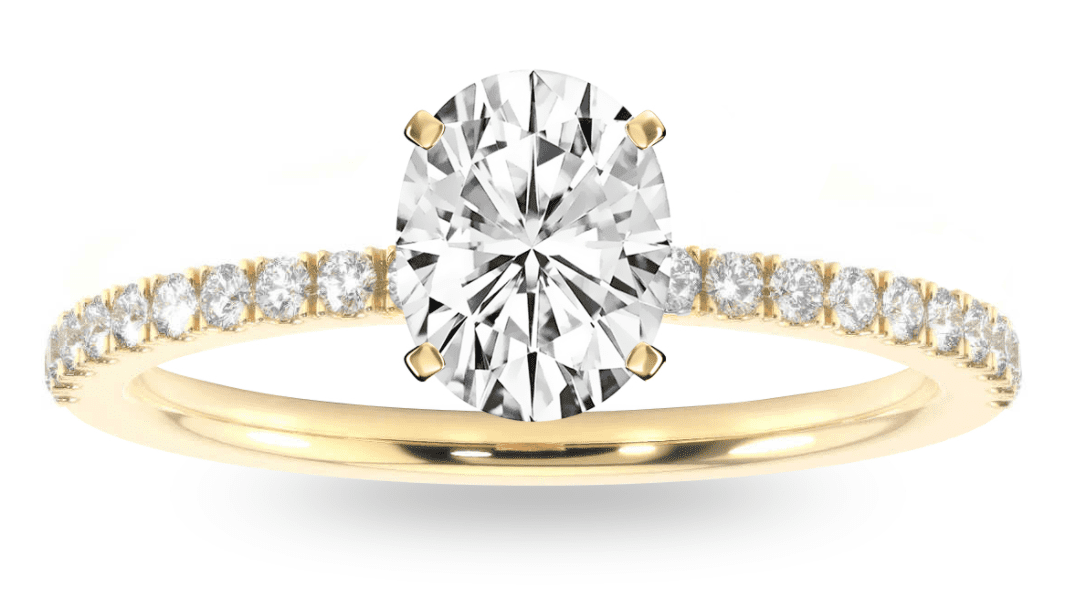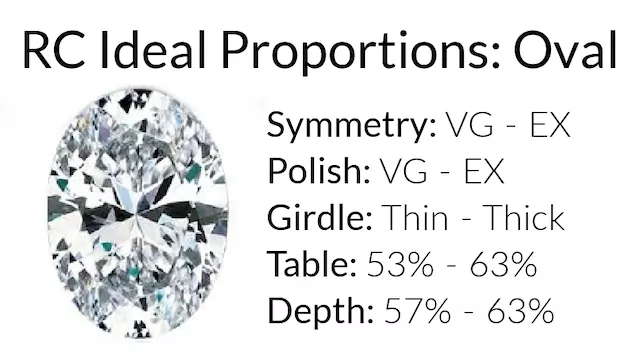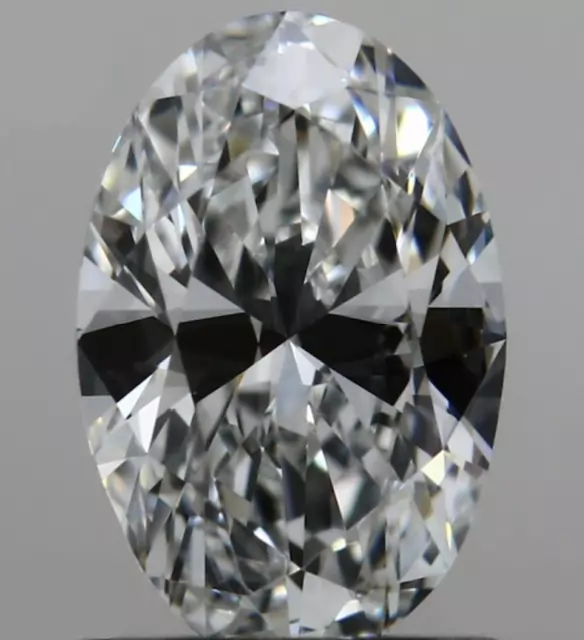Oval Diamond Cut Buying Guide
What is an oval diamond cut look like?
An oval diamond has an elongated, round shape. The elegance of the oval shape is created by its symmetrical design, rounded edges and length which usually varies between 1.33 to 1.66 when compared to its width. It's often compared to a round brilliant diamond that has been stretched out. This shape displays excellent brilliance and can also appear larger per carat than a round diamond, due to its elongated shape.

When viewed from above (which is how diamonds are most commonly seen when set in jewelry), an oval diamond appears quite similar to an egg or an ellipse. The number of facets, which are the flat surfaces cut onto a diamond, typically varies between 57 and 58 in a standard oval cut.

The shape can make the fingers of the wearer seem more slender, thanks to its elongated design. It’s a versatile shape that works well in various types of jewelry, including engagement rings, necklaces, and earrings.
Oval Diamonds
There is one magical diamond shape that can make even the most shovel-like hands look like those of a professional pianist, and that shape is oval. Not only are they complementary to even the most gnarly of fingers, these ‘modified brilliant’ cut diamonds give off an almost unparalleled level of fire and brilliance.
The History of the Oval Shape
While oval diamonds have been cut for centuries, the modern modified brilliant oval that we have all come to know and love is a much younger design. Created by the Russian-born, Lazare Kaplan, in 1957, the modern oval cut earned him a spot in the Jewelers International Hall of Fame. It's no surprise that he was such a talent in the diamond cutting world though considering his cousin was Marcel Tolkowsky. Sound familiar? It should be considering Marcel was the gent who invented the ideal cut diamond!
Ovals Compared to Rounds

An oval diamond cut is definitely the second most popular choice to the round brilliant and it's gaining in popularity every day thanks to celebrity engagements and the lower price tag.
Ovals and rounds have a brilliant cut faceting pattern which allows for a ton of sparkle and shine (if cut well). The oval is essentially an elongated version of the round. It has 57 or 58 facets and is less prone to chipping like a round because there are no corners or points to worry about. Since they have a larger surface area, they typically look larger than a round with the same carat weight and they are usually less expensive because less rough is wasted during the cutting process! There are a few things to watch out for, but nothing that one of our graduate gemologists can't help with.
The problem with ovals is that it is extremely difficult to find a stone with the sweet spot of just enough depth…but not too much. You see, almost all oval cut diamonds are plagued with the dreaded bow-tie effect.
Oval Diamond Bow Tie Effect
When an oval is cut too shallow (under 57%) these ghastly bow ties (dark triangular shadows) can sometimes appear and ruin everyone’s lives. Not even a clever ring setting can disguise these menaces. To counteract this dreadful bow-tie drama, diamond cutters will attempt to cut the diamond a little deeper in the hope of diminishing the bow-tie effect as much as possible.

The problem with this is, when the oval diamond is cut too deep you just end up getting a really rubbish diamond that is dull and lifeless (kind of like Pam in accounting). It truly is a tight line between bow-tie hell and dull-diamond disaster, and that tight line is usually a depth of between 57%-63%. Here you will most likely find those diamonds that have managed to avoid those pitfalls.

Length to Width Ratios for Oval Shape Diamonds
Another way to avoid the whole ‘ugly bow-tie-shadow ruining my diamond’ situation, is to make sure your stone has the appropriate length-to-width ratio. A perfectly symmetrical oval cut diamond should have a L/W ratio of 1.30, while anything higher than 1.50 and you are basically just going out and buying a bow-tie. This being said, it is almost impossible to avoid a tiny hint of bow-tie all together. They will usually be lurking in the shadows in every diamond, so it really is a case of finding a stone that minimizes the effect rather than eliminates it. Sorry!

Ovals and Clarity
With clarity, feel free to pop down to the ‘VS2-SI1’ range, as ovals (just like our radiants and cushions) are very good at hiding small imperfections. As usual though, you need to be careful about the positioning of these inclusions, as a dirty black mark sitting smack dab right in the center of your table could really burst your bubble.
Pay attention to our tips, so you don’t get stuck with a diamond resembling this monstrosity.

Still Not Sure an Oval Cut Diamond is Right for You?
Read more about them below:
- Find Your Perfect Oval Diamond Ring
- 6 Reasons to Buy an Oval Diamond
- Oval Cut Halo Rings
- Whats the best cut grade for this shape? Read more here!
Follow us on Social: Facebook * Instagram * Pinterest * Twitter

